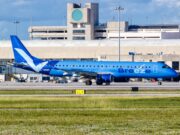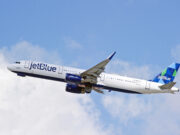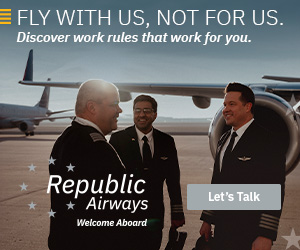
If you’ve been observing the industry, you know that this is a great time to be a pilot. Pay, benefits and status are on the rise. Upgrade times are dropping and fleets are growing. Just a decade ago, few airlines were hiring; pilots today may have multiple conditional job offers (CJO) with the regionals, ultra-low-cost carriers (ULCC), legacies and corporate flight departments. For those fortunate enough to have options, how should you compare prospective employers?
Almost immediately, pilots will look at two things; pay rates (to include signing bonuses) and status of the airline (Is the airline one of the “Big 6?”). Next, they’ll evaluate domiciles (Is XXX fleet junior? How long to hold XXX airport?). After that, the decision-making process becomes more muddled, particularly at the regional level where there can be more than five offers for a qualified candidate. So, what else should you consider when evaluating prospective employers?
I suggest you look at retirement options next. Even if your plan is to change companies in under three years, you cannot predict the future and you should evaluate every job as if it were your last. Importantly, if you are deciding between two competing offers, ask about the companies’ match and their vesting schedules, if this applies. A vesting period is the time it takes for you to “own” the company match. If you plan to change companies before that vesting time frame is up, you may lose a company’s matched dollars, which could equate to thousands.
After looking at the retirement, consider whether each company offers stock options and/or profit sharing. While you shouldn’t budget yourself based on these variable benefits, they can easily amount to 10-15% of your total compensation. A company with a 5% profit sharing can add thousands of dollars to your paycheck in healthy years, helping pad your savings account.
Often pilots don’t consider sick, vacation and paid-time-off (PTO) until we are out flying the line. However, there is significant variation in how companies provide these to their pilots, which can impact quality of life, pay and productivity. Some companies allow pilots to bid for vacation in weekly blocks while allotting “sick time” to pilots on an hourly basis accrued monthly (two to five hours of sick leave per month, for instance). A pilot calls out sick as needed and receives pay if they have the appropriate amount of time in the “bank.” You should also ask if the company allows “pyramiding” on vacation days. This means that if you fly on your vacation days, you get paid your vacation rate plus your trip rate. For those who like to stay at home rather than travel for vacation, this can be an excellent way to pad your income.
Other companies lump sick and vacation together, as (PTO). Pilots can use this whenever they want to get time off for family needs, holidays, illness and more. For those with lower seniority, this system allows more flexibility. You no longer bid for your vacation days with every other pilot, but rather take time off when needed using your bank of PTO. Further, many companies buy back sick, vacation or PTO hours at a premium (say 25-50% of your hourly rate). If you are paid $60 an hour, with five hours of sick time per month, you stand to earn $5,400 per year if your company offers 50% buybacks. If you are on the fence about various companies, ask their pilots and/or your interviewers for the details of their benefits package. This may help you make decisions that best fit your needs and goals.
Many pilots scoff at considering company culture or market niche, but this aspect of your work will impact your day-to-day more than any other considerations. You’d be surprised at the diversity of work schedules in the industry. ACMI, FedEx and corporate operators frequently offer 14-on-13-off or 7-on-7-off type schedules. Each airline builds trips according to their collective bargaining agreement, which can result in some having 6-day trips while competitors offer 3- to 4-day trips. Others like Allegiant Air or the recently announced Breeze Air, offer day turns. Some companies out-station bases in smaller cities like Knoxville or Norfolk versus large hubs like New York or Chicago. Knowing your coworkers, driving to work daily (or weekly) and lower costs-of-living are all factors to consider in your decision.
You’ve likely applied to particular companies because the domicile is desirable. You should also consider asking how that domicile is set up and run for each airline. For instance, some airlines require LAX-based pilots on reserve to cover Ontario, Orange County and San Diego, on the 737 but not the A320. Similar situations arise for New York- and Miami-based crews. Also, consider reserve callout times and how they can help or hinder your quality of life. If you require every second of your reserve callout to make it to the airport on-time, you will be “on house arrest” during your work days. Simply commuting to a base with better seniority or changing fleet types can improve your lifestyle.
In summary, there are many differentiators between potential employers. While the pay rates and domiciles may be the same, other tangible and intangible aspects can tilt the scale in favor of one airline, corporate flight department or charter company versus another. This outline can be used at any level of the industry, whether NetJets, JetBlue or a private owner. Ask these questions of current employees or your interviewer and take the job that provides you the best overall option.
























































